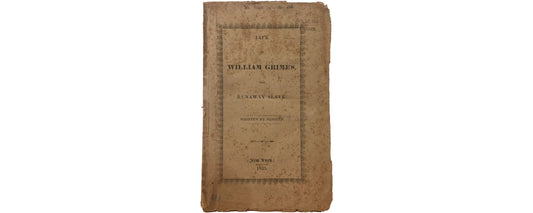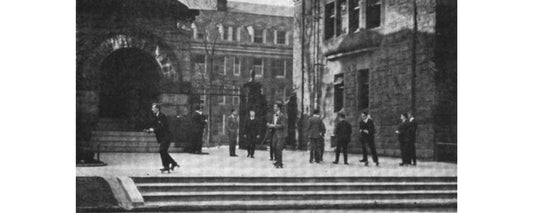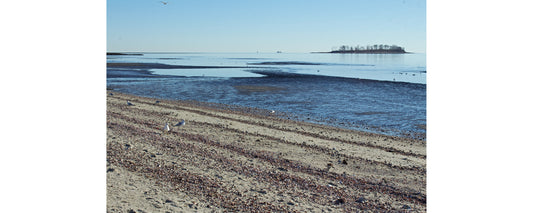This 2016 feature returns just in time for New Haven Ballet’s first live performances since the onset of the pandemic.
* * *
The sun set hours ago, and the dark winter evening outside makes the bright ballet studio seem stark, severe. Tonight, the students of the New Haven Ballet school are practicing for their annual production of The Nutcracker, just like they’ve done four times a week, every week, since the beginning of October. Snowflake wands in hand, a troupe of young women in white tights and pointe shoes goes springing across the floor, legs synchronized.
But that’s not enough. “You sound like stones falling,” instructor Marc Spielberger says after they’ve passed. Spielberger sits perched on a stool at the front of the studio, scanning for errors. “You’re snowflakes. Snowflakes don’t make noise when they fall.” The girls laugh, catch their breath, try it again.
sponsored by
“We’re a classical ballet school, and we have very high standards,” Ruth Barker says. “By the time they’re 12 years old, our students are taking classes six days a week. And not just one class a day. They’re very serious.” Barker is the office manager as well as an instructor. She started dancing at seven years old, and, by age 10, she already knew that ballet was her great passion.
It was also her late husband’s. Noble Barker founded New Haven Ballet in 1985, its first classes held in the basement of St. Paul & St. James Episcopal Church. Now, NHB has a massive space on Audubon as well as five other locations throughout New Haven and Branford.
As the rehearsal pushes deeper into the night, one dancer after another displays preternatural stamina and poise, spinning like tops and leaping into the air. For an art form that delights in the effervescent, ballet requires a gritty discipline. “The training and the condition
New Haven Ballet has been performing The Nutcracker, the holiday staple set to Tchaikovsky’s whimsical score, since 1993, with a break last year due to COVID. The annual show was originally performed at Choate Rosemary Hall in Wallingford before it moved to the Shubert Theatre in downtown New Haven, where it opens again tonight at 7 for a four-performance weekend.
While The Nutcracker is now synonymous with the season, Barker says that when it was first performed, “It didn’t really take off. It wasn’t successful.” The ballet owes a large portion of its ultimate success to George Balanchine, a Russian dancer and choreographer born at the beginning of the 20th century who’s often viewed as the father of American ballet. Balanchine created the show’s modern choreography, which Barker calls “absolutely perfect and exquisite—the gold standard,” and now Drosselmeyer, Clara, the Mouse King and The Nutcracker’s cast of animate edibles take the stage yearly “all across the country.”
After more than an hour of grueling rehearsal, the number of dancers has dwindled to a handful with more prominent roles. Two dancers practice their duet to the “Spanish Chocolate” portion of the ballet, mirroring each other’s movements across the floor, the male partner occasionally jumping into physics-defying spins.
But Spielberger isn’t satisfied. He pauses the duet to tweak the leaper’s performance. The jumps, he says, are “all over the place.” He tells him to try again, over and over. An unmistakable exuberance emerges from the dancer, becoming more pronounced each time he flings himself into the air. Eventually, Spielberger is pleased, and the dance continues.
Ballet makes such severe demands on dancers that “you have to constantly remember why you started dancing—because of joy, because of the love of it,” Barker says. “There’s really nothing like moving to the music. Everything can go wrong in the world, and you go into that ballet studio and you feel free.”
New Haven Ballet
Main Studio: 70 Audubon St, New Haven (map)
(203) 782-9038 | administrator@newhavenballet.org
Website | The Nutcracker at The Shubert Theater (Dec. 17-19, 2021)
Written and photographed by Sorrel Westbrook. This lightly updated story was first published on December 6, 2016.








